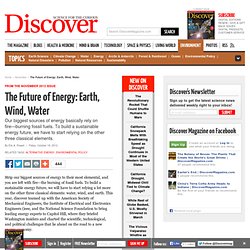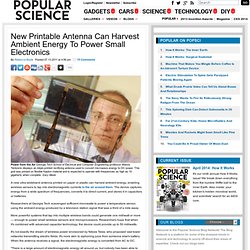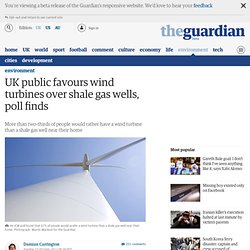

Non-traditional energy. Oil production and power shifts. DIY energy. Batteries. Glass solar developments. Nuclear. New Study on Offshore Wind Power in China. Proposed Energy Exploration Sparks Worry on Ocean Canyons by Paul Greenberg. 21 Jan 2013: Report by paul greenberg “Your jaw’s gonna fricking drop,” the guy fishing next to me said, “when after, like, three minutes, you still haven’t hit bottom.”

These words were spoken to me last September as I dropped a three-pound weight and two globs of clam bait over the side of the party fishing boat Viking Star into an abyss few people know exist — an abyss that is re-emerging as a battleground in the fight for the world’s dwindling natural resources. I was fishing 150 miles off Long Island in a bioregion commonly referred to as “the Canyons” — a latticework of 70-odd, 1,000-15,000-foot deep trenches that filigree the periphery of the continental shelf from North Carolina to Maine. Some of the canyons were formed relatively recently during the last Ice Age when sea levels were lower and the passage of ancient rivers carved out channels.
View gallery. The Future of Energy: Earth, Wind, Water. 4 EFFICIENCY: Exploit human Behavior THE CHALLENGE The greatest clean energy sources and efficient technologies are pointless if nobody wants to use them.

Sometimes the resistance reflects a problem of engineering (for instance, the short range, high cost, and long charging time of electric cars). Apple's Largest Data Center is Powered by 100% Renewable Energy. Apple has announced that its newest—and largest—data center is powered entirely by renewable energy.

Solar panels and fuel cells incorporated within the Maiden, North Carolina facility generate enough on–site energy to power up to 17,600 homes for an entire year. The project is part a larger push by Apple to switch to renewable energy sources, an effort which has resulted in 75% of Apple’s offices worldwide being powered by clean energy. Like other technology companies such as Amazon and Microsoft, Apple has large data centers—Internet storage facilities—which consume vast amounts of energy. Its newest data center located in Maiden, North Carolina, is the largest of its kind to be powered completely through renewable energy generation. A large solar array surrounds the data center and has an annual production capacity of 42 million kWh of low-carbon renewable energy, enough to power 17,600 homes for one year. Researcher’s new solar reactor uses unique mirror to harvest the sun.
The Sun, roughly 93 million miles away, is what powers everything for us on Earth in one way or another.

New Printable Antenna Can Harvest Ambient Energy To Power Small Electronics. A new ultra-wideband antenna printed on paper or plastic can harvest ambient energy, enabling wireless sensors to tap into electromagnetic currents in the air around them.

The device captures energy from a wide spectrum of frequencies, converts it to direct current, and stores it in capacitors or batteries. Sediment behind dams makes them “hot spots” for emissions. With the “green” reputation of large hydroelectric dams already in question, scientists are reporting that millions of smaller dams on rivers around the world make an important contribution to the greenhouse gases linked to global climate change.

Their study, showing that more methane than previously believed bubbles out of the water behind small dams, appears in ACS’ journal Environmental Science & Technology. Andreas Maeck and colleagues point out that the large reservoirs of water behind the world’s 50,000 large dams are a known source of methane. Like carbon dioxide, methane is one of the greenhouse gases, which trap heat near Earth’s surface and contribute to global warming. Methane, however, has a warming effect 25 times more powerful than carbon dioxide. Synthetic Fuel Made From Air and Water. Written by Philip Proefrock on 24/10/12 An English company called Air Fuel Synthesis has begun producing gasoline (petrol) directly from air and water.

Using carbon capture technology to sequester CO2 out of the atmosphere, and electrolysis to crack water into its constuituent hydrogen and oxygen, the company's process then combines the hydrogen and carbon dioxide to create synthetic gasoline or other fuels. To be carbon emissions neutral, any carbon that is going to be burned as fuel ought to have come from the atmosphere, rather than from fossil sources buried in the ground. That is why plant-based and microbial methods of producing fuel are considered relatively clean, since the carbon in them was atmospheric. New Skyscraper-Deconstruction Technique Harvests Energy from Demolition Process.
Demolishing tall buildings is typically a loud and messy process that produces a lot of dust and not a lot of building materials that can be salvaged.

‘Demand Response’ Programs Saved Crucial Electricity During Heat Wave. Japan extracts 'fire ice' energy resource from its seabed in 'world first' It looks like Japan may have a reprieve in its energy plight, after claiming it's the first country to extract methane hydrate "fire ice" from its seabed.

Officials say the plan is to have viable production technologies in place by 2018/19. The state-run Japan Oil, Gas and Metals National Corporation (Jogmec) made the announcement 11 March, revealing that a year-long expedition to the watery depths had finally paid off. UK public favours wind turbines over shale gas wells, poll finds. More than two-thirds of people would rather have a wind turbine than a shale gas well near their home, according to a new opinion poll published on Tuesday.

Asked to choose between having the two energy sources within two miles of their home, 67% of respondents favoured a turbine, compared to just 11% who would support the gas development. The findings of the UK-wide ICM survey shows that only nuclear power and coal are less popular than shale gas developments. The ICM poll, together with a second new poll from YouGov, show public opinion is against George Osborne's push for a new "dash for gas" as the central plank of the government's energy policy.
The polls come at a critical time for the government's energy bill, which aims to deliver the £200bn required to replace and develop the nation's ageing energy infrastructure, due to be published on 5 November. The poll showed 49% of people would support a wind turbine being erected within two miles of their home, with 22% against.